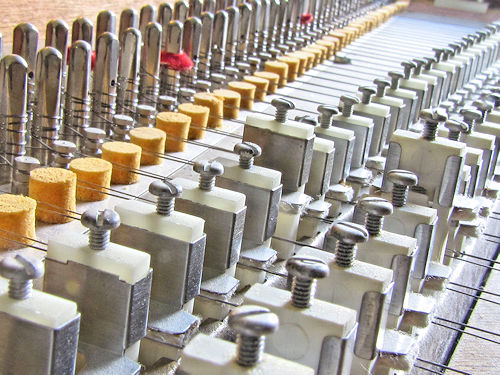365Caws is now in its 16th year of publication. If I am unable to post daily, I hope readers who love the natural world and fiberarts will seize those days to read the older material. Remember that this has been my journey as well, so you may find errors in my identifications of plants. I have tried to correct them as I discover them. Likewise, I have refined fiberarts techniques and have adjusted recipes, so search by tags to find the most current information. And thank you for following me!
Tuesday, January 18, 2022
Pluck It
Day 97: When it comes right down to the mechanics, a harpsichord is a much more complicated piece of equipment than its descendant, the piano. For one thing, the strings are plucked, as opposed to being struck. When a key is depressed, its jack is raised in much the same fashion as the jacks on a loom raise the harnesses, and a small projection called a plectrum ticks the string, causing it to sound. When the key is released, the jack drops back into its resting position and the sound is dampened. In other words, if you want a whole note to sound throughout an entire measure, your finger must remain on the key while your other fingers play the remaining notes. In this, the method for playing a harpsichord is similar to that used in playing an organ. My harpsichord is double-voiced, which is to say that each key can cause two strings to be plucked at once ("can," not "must"). I also have the option to lightly damp either voice for a softer tone. It is also rather a pain in the neck to tune, but I've written about that before in all its gruesome detail.

No comments:
Post a Comment